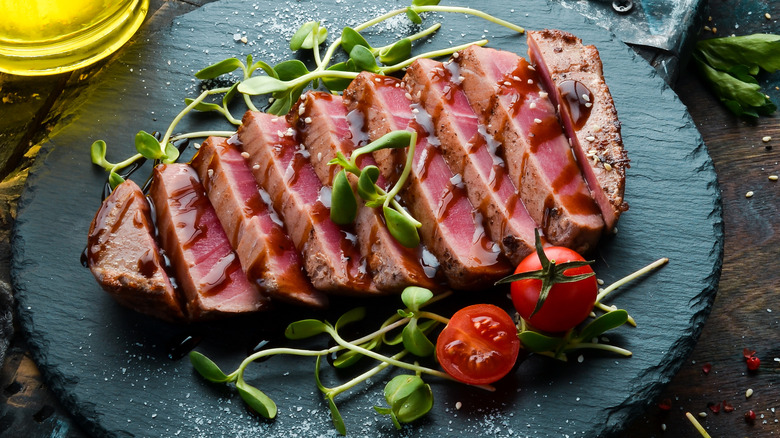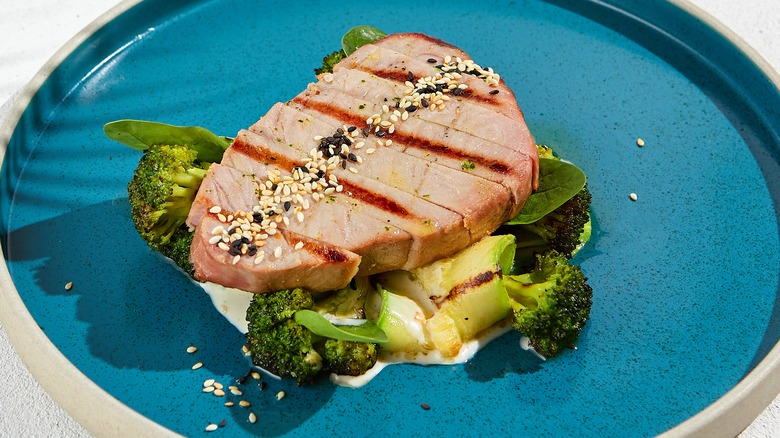How To Tell When Oil-Poached Tuna Is Done Cooking
By simmering in a bath of olive oil, herbs, and aromatics, fish receives a buttery, luscious texture with a spiced taste. Oil-poaching can work on a variety of different fish, but the method is especially great for tuna. Tuna has a meaty flavor, which is enhanced by the peppery, earthy flavor of the olive oil.
You might be used to consuming tuna in its canned form, but freshly cooked tuna won't look all that different. Depending on the type of tuna, canned tuna can either be white or pink. The easiest way to tell if your tuna is done cooking is by judging its color. When poached in oil, cooked tuna should be an opaque white color on the outside, while the center remains pink. If the tuna is fully white, that means it's overcooked, which gives it a dry and tough texture.
The exact cooking time will depend on the thickness of the tuna. For an average-sized fish, the tuna should be done after around 7-10 minutes total. While cooking time is key, of course, there are other tips to keep in mind while making tender, flavorful oil-poached tuna.
How to oil poach tuna properly
While the tuna rests for about 10 minutes or so, pour enough olive oil in a pot to fully submerge the fish. Add sliced shallots, minced garlic, thyme, and rosemary into the pot and set the temperature to a medium-low heat. Place any extra aromatics, such as ginger, peppercorns, or citrus peel, into the pot, too. While the oil starts to bubble, sprinkle salt and pepper onto the tuna to taste.
Once the shallots have softened and the herbs are sizzling, lower the heat and carefully add the tuna. As the tuna simmers, spoon the olive oil and aromatics continuously over the top to keep it moist. After about seven minutes, the fish should start to whiten. Using a fork, gently scratch the top of the tuna to see if it flakes easily. When it has finished cooking, gently remove it with a spatula and serve with quinoa and roasted veggies or a colorful Niçoise salad.

